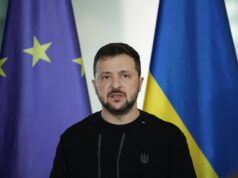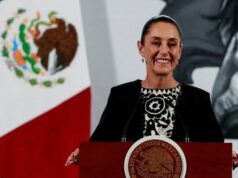Two incidents occurred in faraway lands this past couple of weeks with somewhat of a tangential bearing on our country.
The first was the death of VS Naipaul, whose passing has been mourned around the world, and there is nothing I can say to match the words spoken, written and tweeted by countless others who had been touched by his writings.
Having bought A House for Mr Biswas some time ago, the only tribute I can pay this great writer is to resolve to read it, and hope it will rekindle the magic that had moved me so much when I first read it more than 30 years ago.
Naipaul and Nepal
For many of us who grew up reading Naipaul, the similarity between ‘Naipaul’ with the somewhat common surname, ‘Nepal’, was thought only to be an orthographic coincidence.
There certainly was the term ‘Nepaul’ used by the English to refer to our country during our initial contacts with them more than two centuries ago, and which is probably the source of the pronunciation still favoured by Westerners, and, incidentally, also by our last two kings.
We do know from his first book on India, An Area of Darkness, that Naipaul’s maternal ancestors were Dube Brahmins from a village in eastern Uttar Pradesh.
When, as part of what he calls a ‘duty’, he reached the area in 1962, Naipaul had dismissed the nearest town in his inimitably wry tone as “not even graced by a ruin, celebrated only for its connexions with the Buddha”.
Patrick French’s biography of Naipaul simply says that his mother’s father hailed from “a village near Gorakhpur on the Nepalese border with India”.
But an earlier book, Music of Hindu Trinidad: Songs from the India Diaspora, by Helen Myers, had already identified the place to be Pharenda, now a small bazaar that lies mid-way on the road between Sunauli on the Nepal border and Gorakhpur, a journey countless Nepalis make every day.
Gorakhpur was probably the object of Naipaul’s scorn mentioned above, and anyone who has been to the place would be hard pressed to disagree.
As someone who grew up with his mother’s family, Naipaul knew very little about his father’s side. Then came his revelation in 2001.
Talking about his own journey as a writer during his Nobel acceptance speech, Naipaul dwelt at length on his own background—“exceedingly simple and exceedingly confused”. He then went on to say: “I know nothing of the people on my father’s side; I know only that some of them came from Nepal.
Two years ago a kind Nepalese who liked my name sent me a copy of some pages from an 1872 gazetteer-like British work about India, Hindu Castes and Tribes as Represented in Benares; the pages listed—among a multitude of names—those groups of Nepalese in the holy city of Banaras who carried the name Naipal. That is all that I have.”
Not that it really matters where he really came from since Naipaul, with all his faults, belonged to the entire humanity. But a little bit of historical lore in that book is indeed fascinating.
Written by one Reverend MA Sherring, ‘missionary of the London Missionary Society’, Hindu Castes and Tribes (1868) has some interesting details about Nepali Brahmins living in Varanasi at the time.
He writes: “The Naipali Brahmans are now separate from all others, but a tradition exists that, in the time of Nanda Raja [probably a reference to the Nandas that preceded the Maurya dynasty in the Gangetic plains four centuries BCE: my comment], they sustained intimate relations with other tribes, and intermarried with them [and begat Chhetris, the largest social group in today’s Nepal: again me].
Their lax ceremonial habits, however, in eating the flesh of buffaloes and other animals, and in drinking ardent spirits, would also lead them to be despised, and to be regarded as a degenerate race by the stricter Brahmans of the plains.”
“The divisions and sub-divisions of this tribe are very numerous,” Sherring continues, before listing the main clans, gotras and titles [surnames] “furnished by the Nepalese Brahmans of Benaras”. He notes: “While the names of their gotras are, for the most part, similar to those found among other Brahmanical tribes, nevertheless, the titles which they assume are, with few exceptions, peculiar.”
For us, in Nepal, though most are instantly recognisable, such as, in the order of clan-gotra-title, Lagantol-Kausik-Regumi, Makhantol-Vasisht-Bhattrai, and Nuvakot-Kaudinya-Parjuli. The clans, if that is what they are, appear to be localities in Nepal those groups probably ascribed their origins to since these are places well known to us.
The surname ‘Naipal’ itself is associated with three clans [place names?] — Pokaldyan, Pashupatitar, and Mandan—all of which are unknown to me but for others perhaps not so. Sherring has used diacritics to inform us that the second ‘a’ in ‘Naipal’ is pronounced as in ‘far’.
Also, noting his use of ‘Naipali’ for ‘Nepali’ in the earlier paragraph, it leads us to the inescapable conclusion that ‘Naipal’ is nothing but ‘Nepal’. As described above, in the English-speaking world of India and Trinidad, the distortion of ‘Naipal’ to ‘Naipaul’ was only to be expected.
Interestingly, also listed is the clan ‘Naipal’ with the associated surname being ‘Dyaukota’, ie, Devkota. One cannot but help imagine if our own literary giant, Laxmi Prasad Devkota, might have had some connection with Naipaul.
We will never know, and biographer French’s interview published in these pages was most unhelpful when all he said was that “his [Naipaul’s] paternal aunts looked like they came from the hills”—whatever that means.
Nipples and bottoms
Unlike this story of Naipaul’s, the second incident I refer to in my opening is far less flattering of our country. This had to do with a story that demonstrated once again what an ignoramus the current occupant of the White House is.
As reported by the news company, Politico, prior to his meeting with Indian Prime Minister Narendra Modi, President Donald Trump “appeared confused by Nepal and Bhutan, which lie sandwiched between India and China”.
The report goes on to state that he had no idea what Nepal and Bhutan were and thought they were part of India. And to crown it all, Trump “mispronounced Nepal as ‘nipple’ and laughingly referred to Bhutan as ‘button’”.
Granted, Nepal is a small and poor country of the kind Trump would have no interest in. But, given the number of headline-grabbing news Nepal has featured in over the past couple of decades, one would assume that despite his self-absorption Trump would have heard of us.
In 2001, the world media had obsessed over the palace massacre for days on end, and then switched its attention for some more time to the Maoist insurgency they discovered raging in the country. The 2006 people’s movement had us back in the news, and then, of course, the 2015 earthquake.
Even more recently, as Trump prepared to have his summit with North Korea’s Kim Jong-un in Singapore, news outlets wowed over the fact that Gurkhas would be providing security. The man actually does not read anything.
Some of my compatriots would have felt slighted by American president’s reference to us as the people of Nipple. For me, it was simply ‘Sad’, a favourite word of Trump’s on Twitter, that the most powerful person in the world is so ill-informed about almost anything.
On the other hand, I cannot help but think that given his obsession with parts of the female anatomy, it was but natural that, as in the word association game, Trump would say ‘nipple’ given half a chance. The surprise was that Bhutan did not come out as ‘bottom’.




